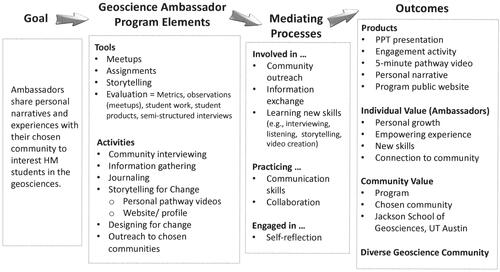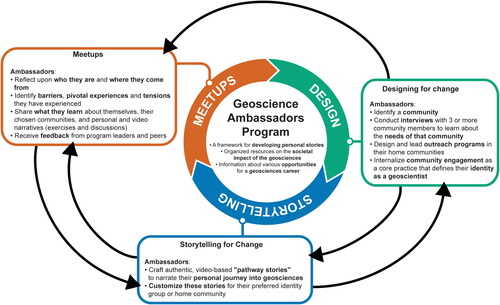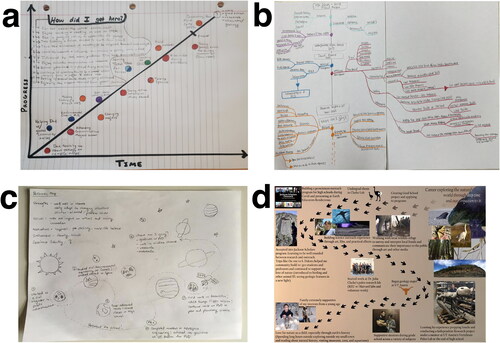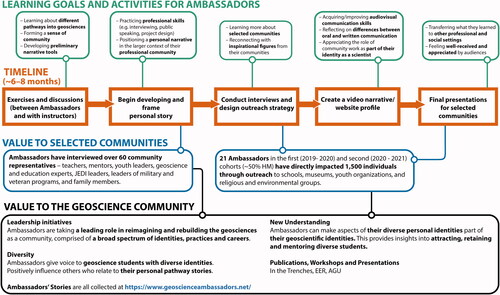Figures & data
Figure 1. Conjecture map for the theory of change developed in the geoscience ambassadors program. Structure modified after Sandoval (Citation2014).

Table 1. Diversity in the geoscience ambassadors program relative to school, university, state, and national populations. HM stands for “historically marginalized,” that is, racial and ethnic identity groups that have historically been designated by the national science foundation as underrepresented in STEM fields, namely individuals who identify as hispanic, black or African American, or Native American. Participants’ gender was categorized based on self-reporting. These categories have been chosen for the purpose of rough statistical comparison with populations (i.e., school, university, discipline), and are not meant to reflect programmatic priority or preference relative to other identity groups.
Figure 2. General diagram of the three main overlapping components in the geoscience ambassadors program. Arrows indicate interactions between these components as developed by Ambassadors when crafting their personal stories.

Figure 3. Examples of pathway maps designed by geoscience ambassadors during the program. ambassadors either drew maps by hand (a–c) or designed it as an image file (d).

Table 2. Pathway elements considered by students when answering question ‘(1) How did I get here?’.
Table 3. Pathway elements considered by students when answering questions ‘(2) Where am I going?’ and ‘(3) How will I get there?’.
Table 4. Example template used by ambassadors for community interviewing. Selected examples from geoscience ambassadors’ interview scripts (Ellins et al. Citation2021).
Table 5. Geoscience ambassadors program value creation organized into the stages of the value assessment framework (Wenger et al., Citation2011).
Table 6. Data sources and types.
Figure 4. Extended timeline of the geoscience ambassadors program for a given cohort, from the first meeting to final presentations by ambassadors. Boxes branching off from the main timeline (in orange) show goals and activities (in green) for Ambassadors at each step of the program, and outputs of value to targeted communities outside the program (in blue and black).

